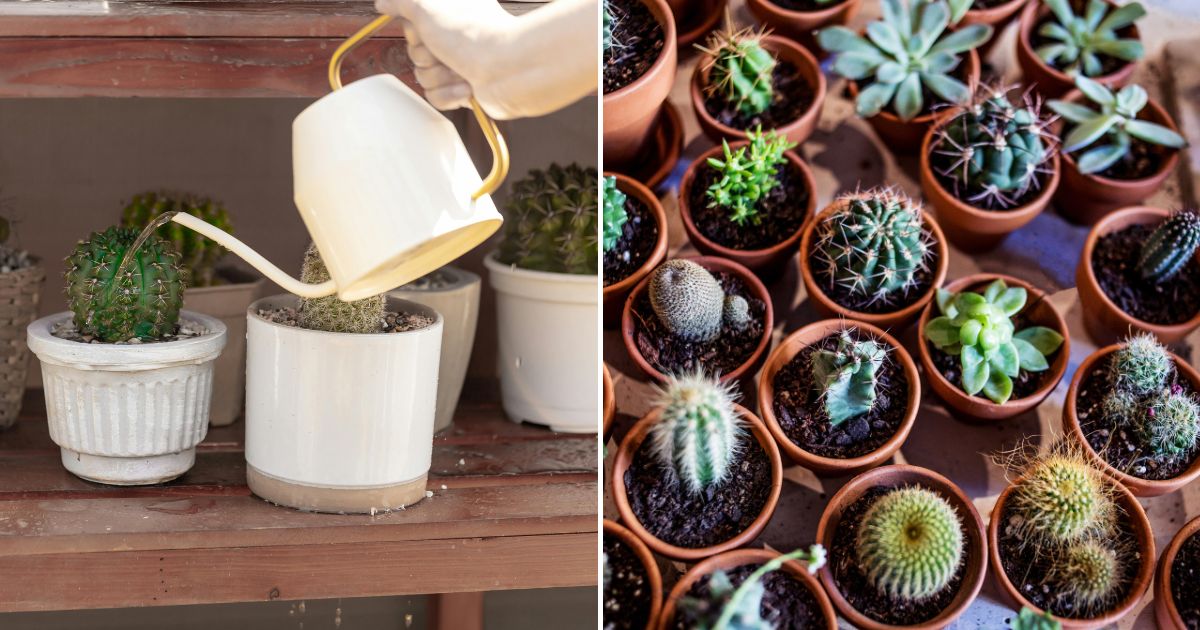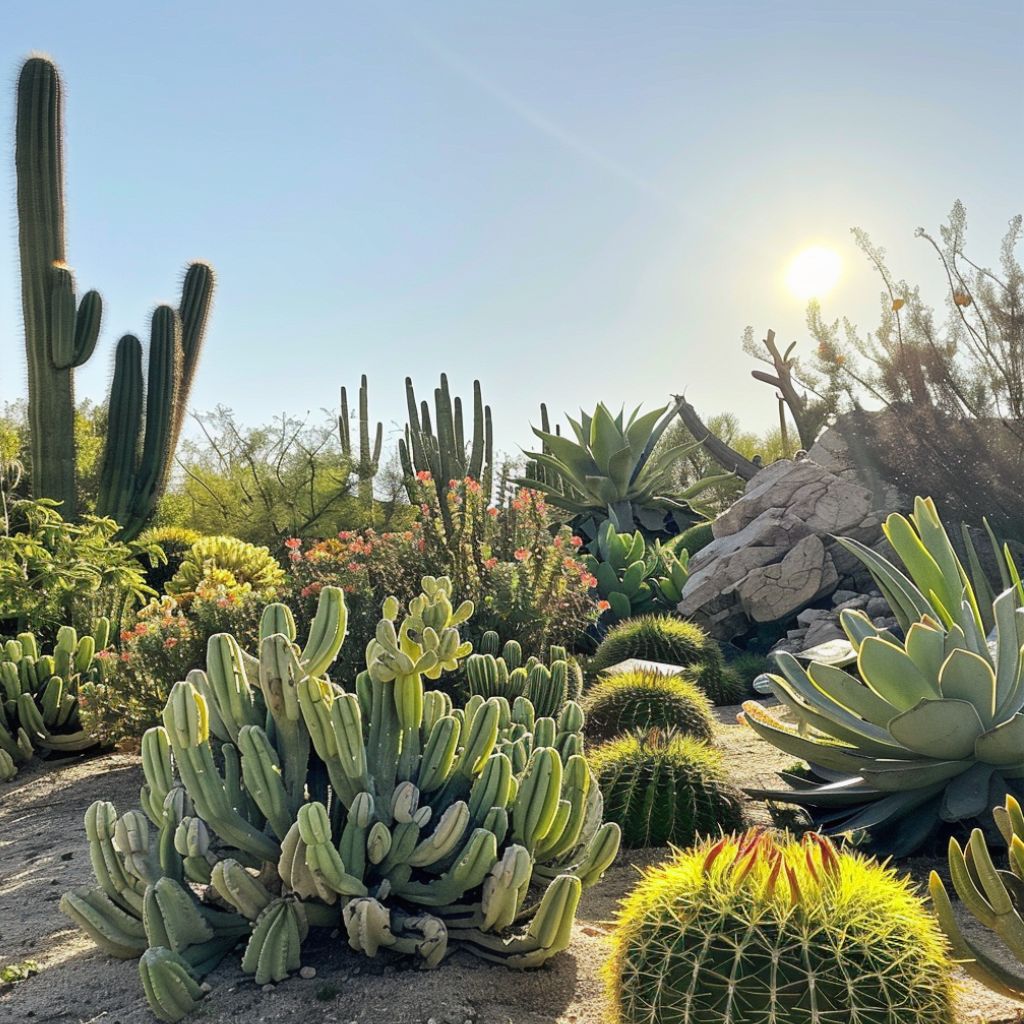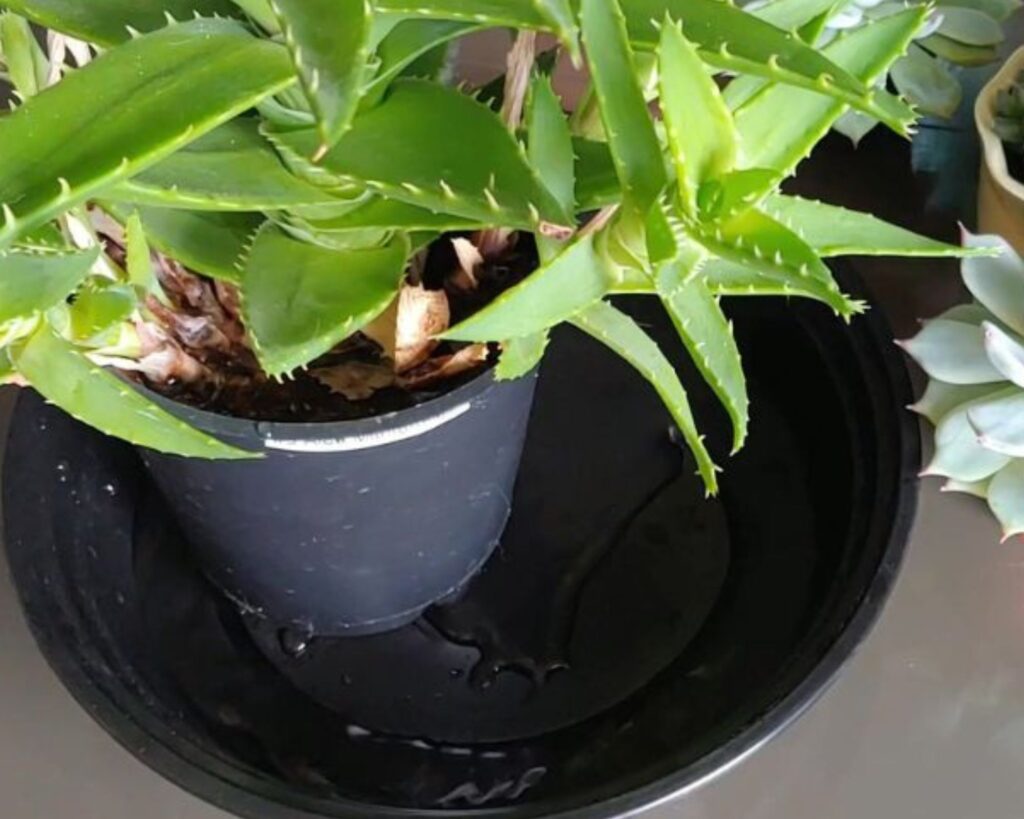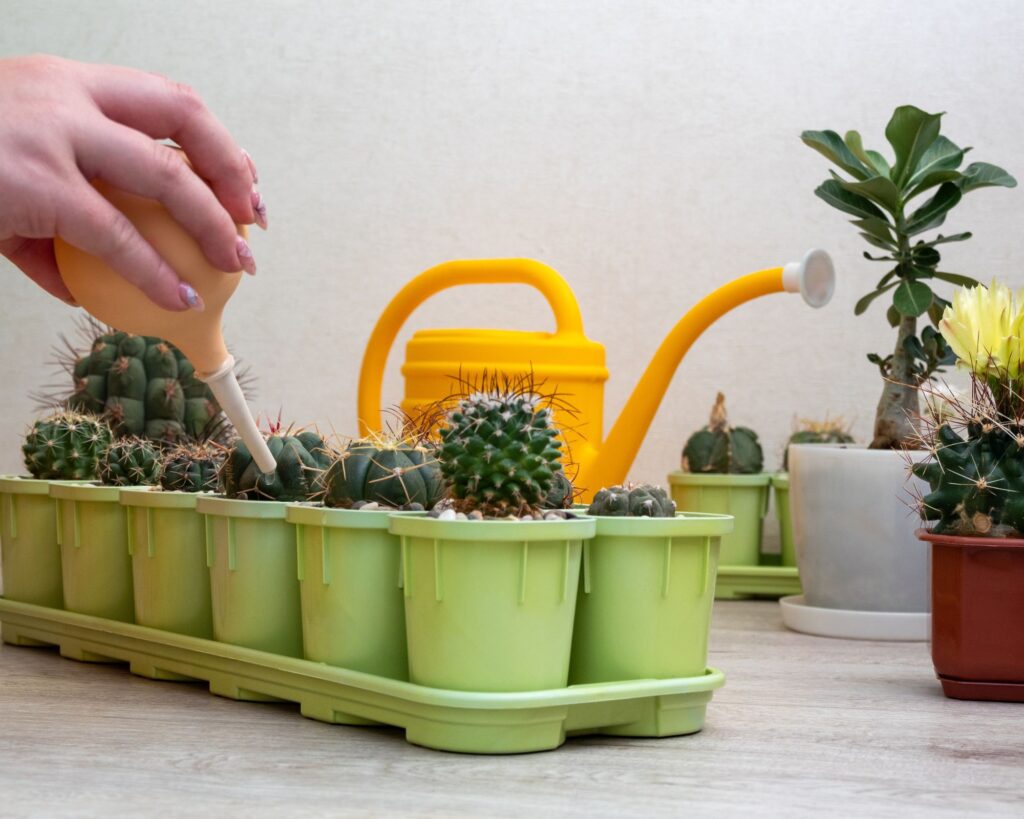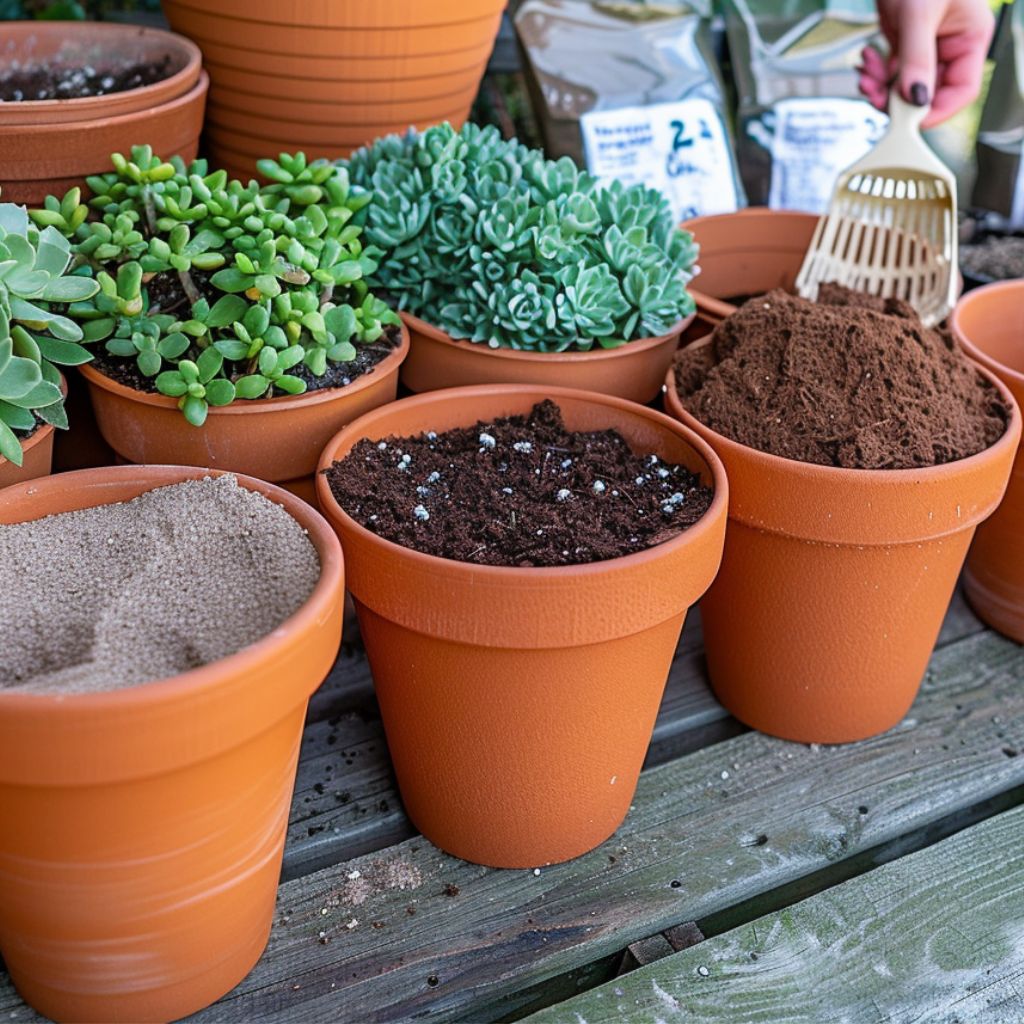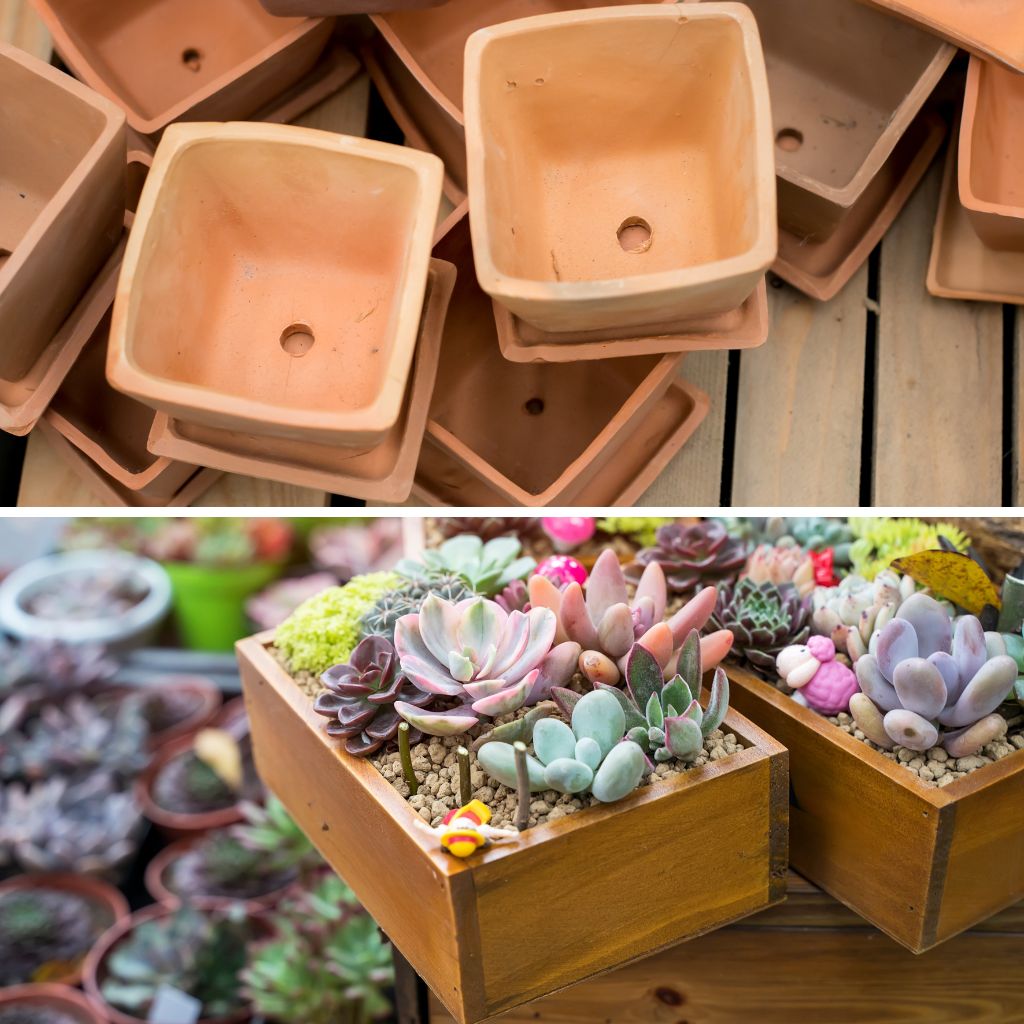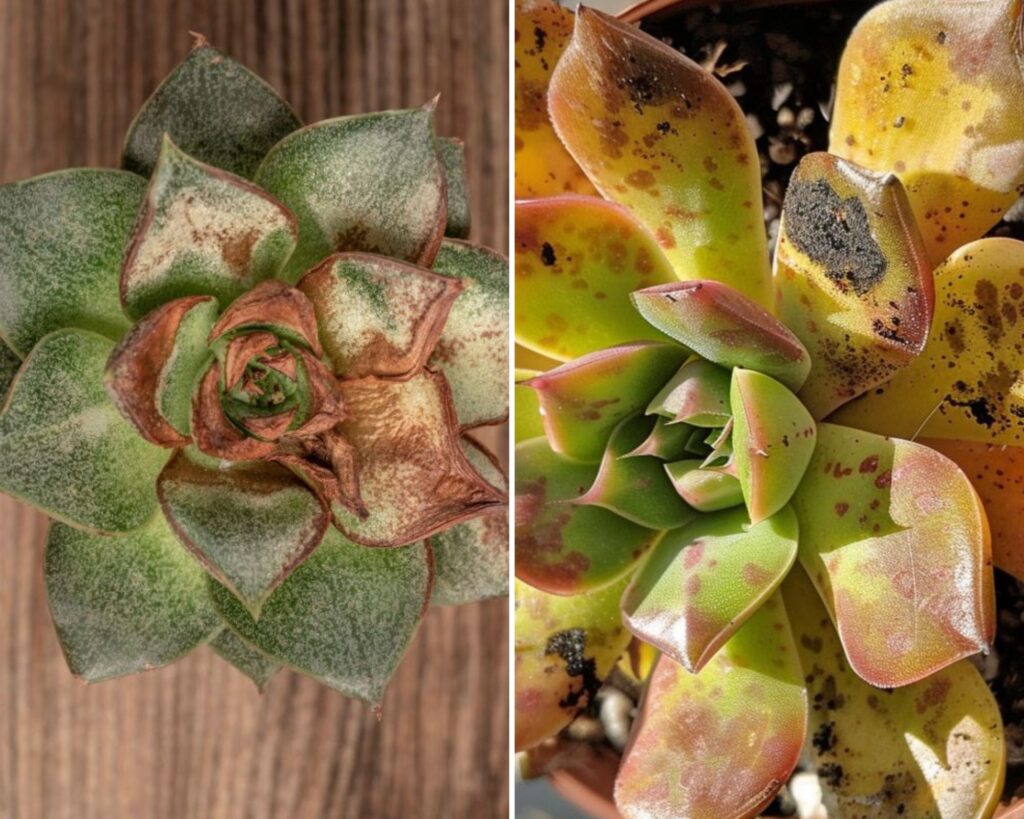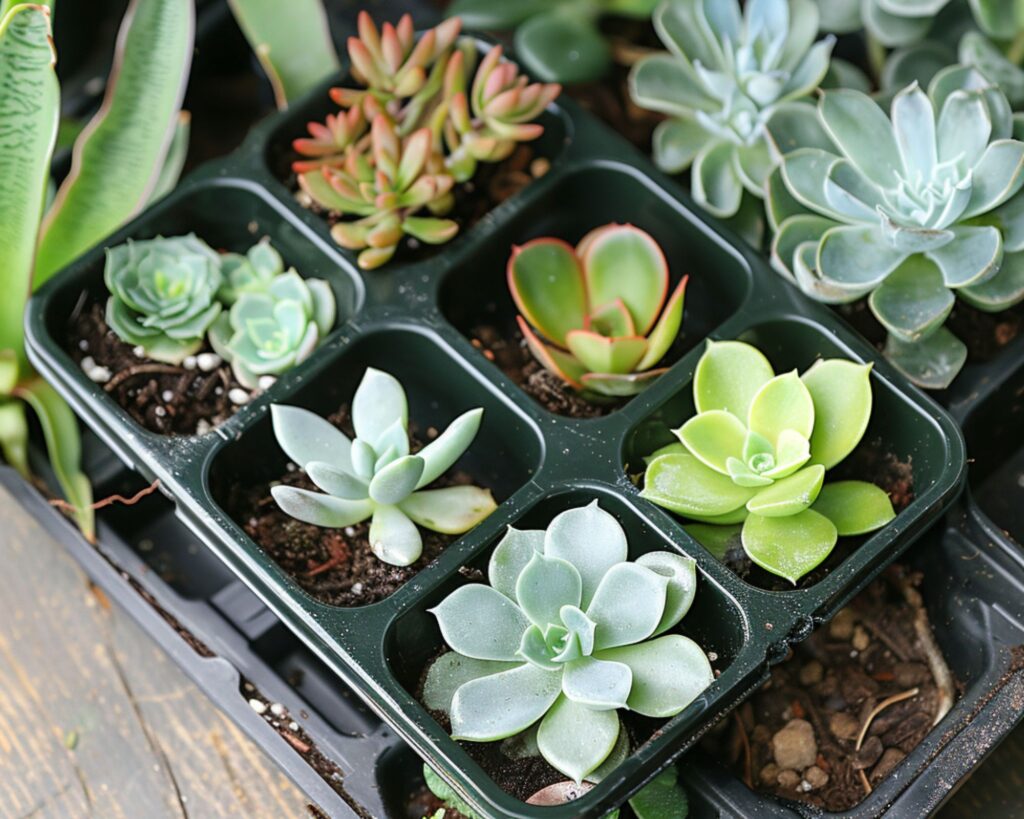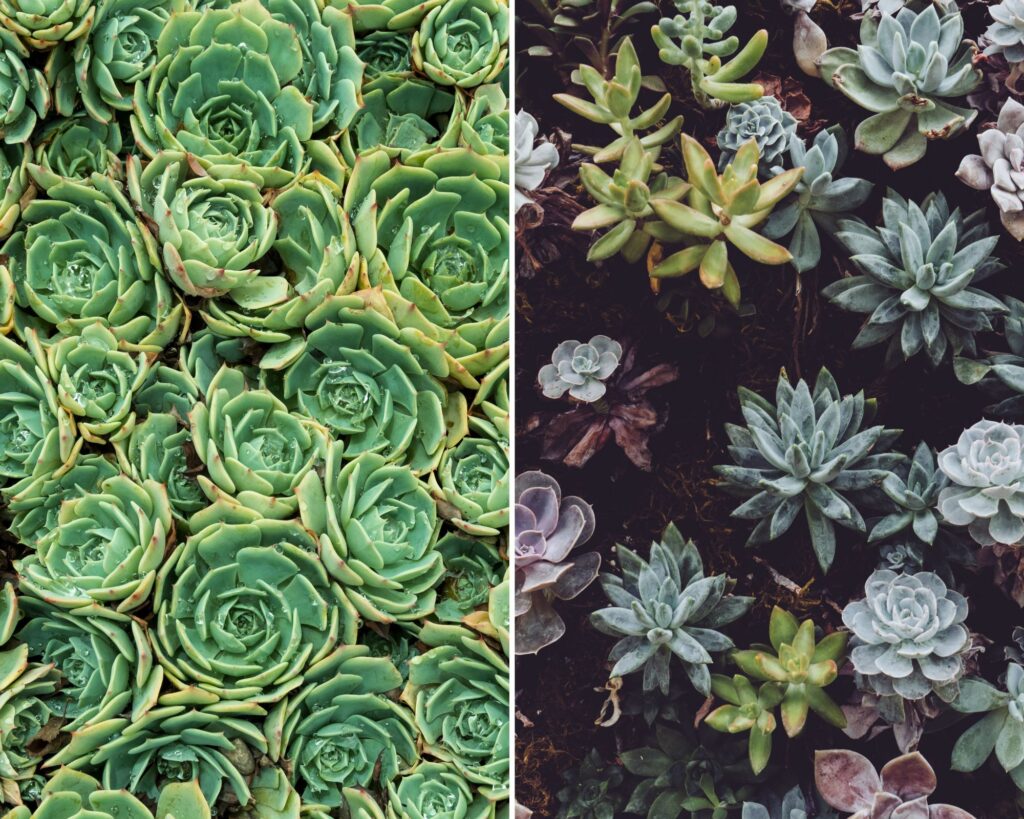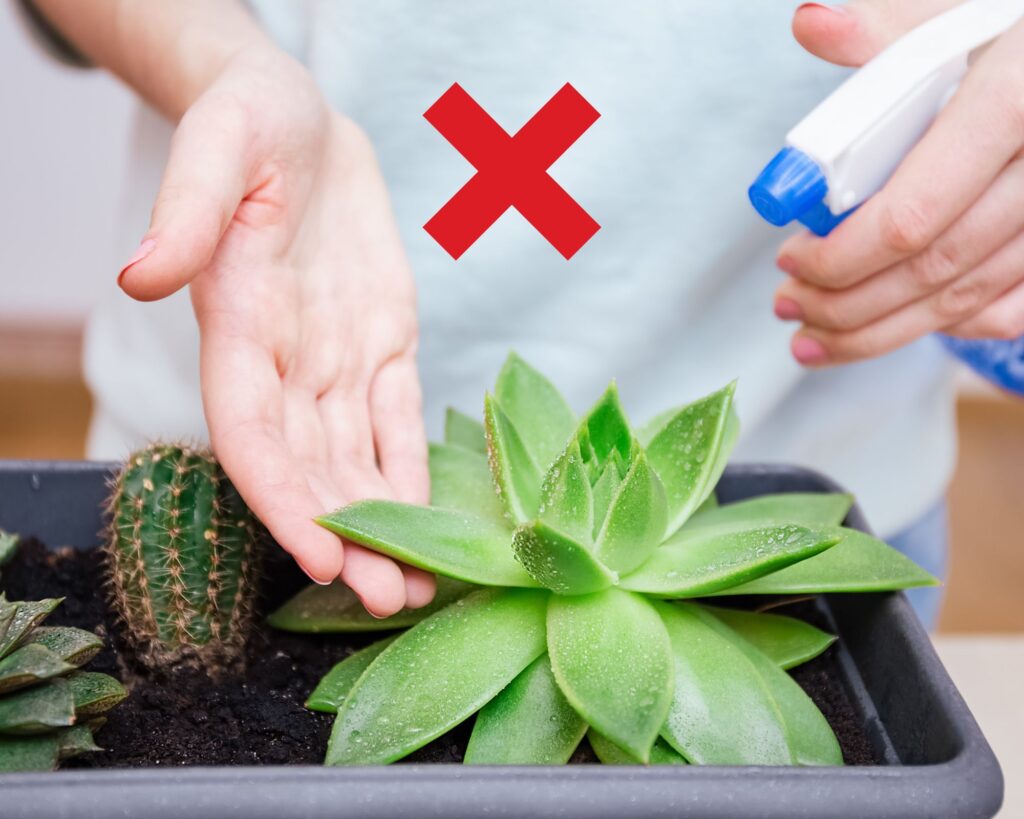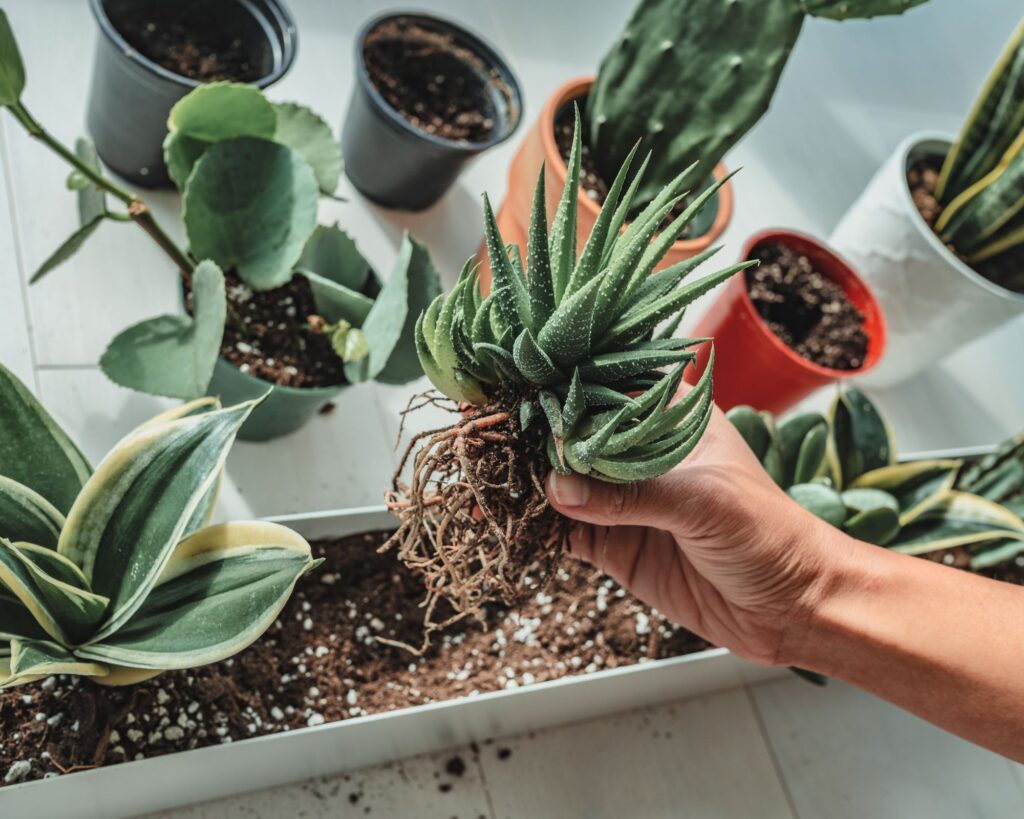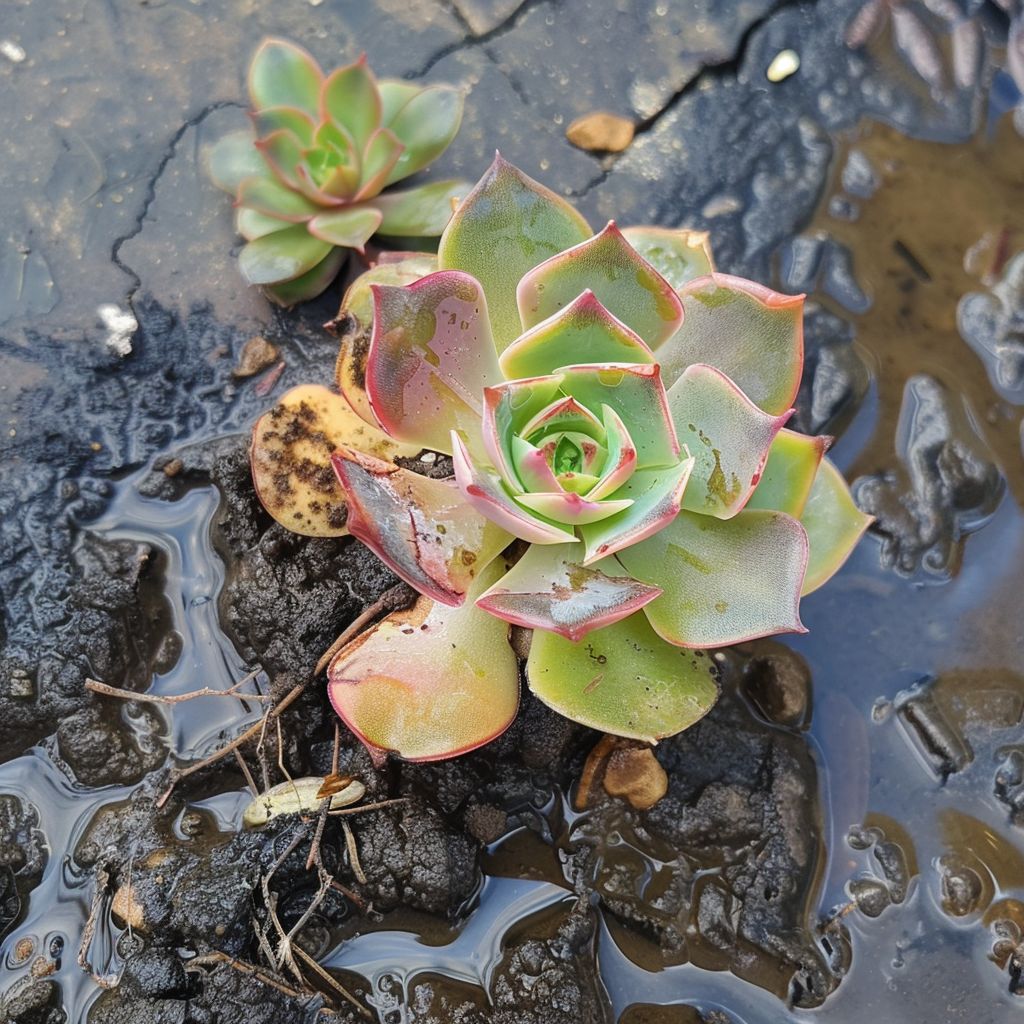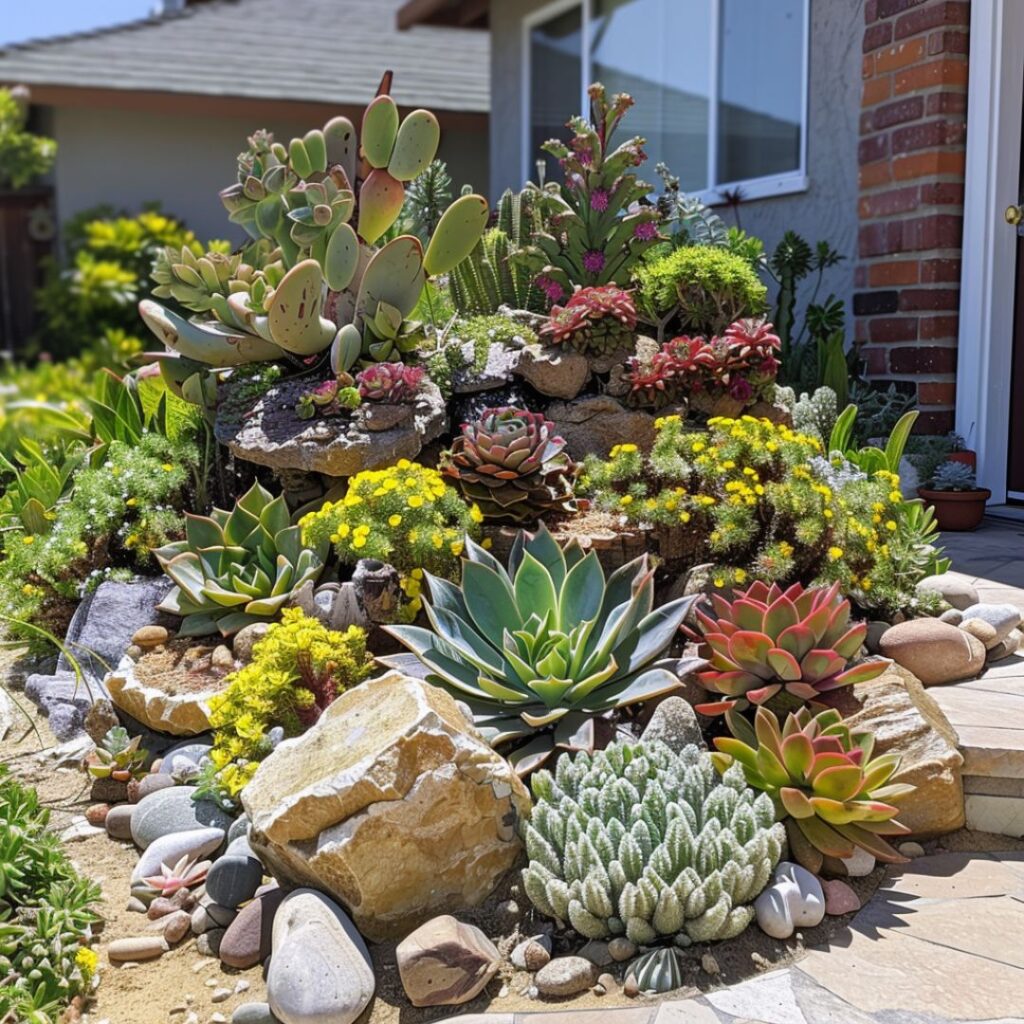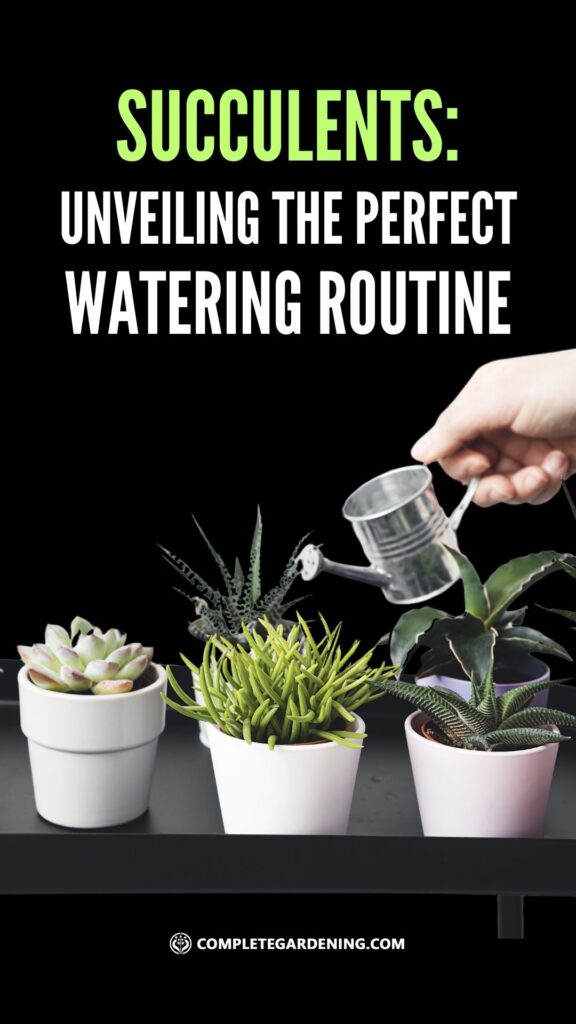Succulents are unique and resilient plants known for their ability to thrive in dry conditions.
However, despite their hardy nature, improper watering is a common reason why succulents fail to survive.
If you’ve struggled with keeping these beautiful plants alive, don’t worry! This guide will provide you with essential tips to water your succulents the right way, ensuring they stay healthy and vibrant.
Understanding Succulents’ Natural Habitat
Succulents, including cacti, are native to arid regions where they experience heavy but infrequent rainfall. These plants have adapted to store water in their leaves, stems, and roots, allowing them to survive long periods without water.
This adaptation is key to understanding how to water them properly in your home or garden. In their natural habitat, succulents grow in well-draining, sandy soils and endure long dry spells punctuated by brief, heavy rains.
This environment has shaped their unique ability to conserve water, making them drought-resistant.
The “Soak and Dry” Method
The best way to water succulents is with the “soak and dry” method. This technique mimics their natural watering cycle and helps prevent root rot, a common issue with overwatered succulents.
- Soak the Soil Completely: Water the soil thoroughly until water runs out of the drainage holes. This ensures the roots receive adequate moisture.
- Let the Soil Dry Out: Allow the soil to dry out completely before watering again. This drying period is crucial as it prevents the roots from sitting in water, which can lead to rot.
This method is effective because it closely resembles the natural conditions succulents have evolved to withstand. When you soak the soil, it imitates the heavy rains they would experience in their native habitat.
Indoor Succulents
Indoor succulents are protected from direct sunlight and extreme temperatures, which means they retain moisture longer. Follow these tips for indoor succulents:
- Avoid Watering the Leaves: Water directly onto the soil to prevent rot. Use a small spout watering can or a squeeze bottle for precision.
- Check Soil Moisture: Before watering, check if the top inch of soil is dry. Only water if the soil is dry to the touch.
- Frequency: Typically, watering every 14-21 days works well. Adjust based on your home’s humidity and temperature.
Indoor environments are usually more controlled than outdoor ones, which means less frequent watering is required. The lack of direct sunlight and lower temperatures indoors help retain soil moisture longer.
However, the indoor air can be drier due to heating and cooling systems, which may require occasional adjustments in watering frequency.
Outdoor Succulents
Outdoor succulents, exposed to the elements, may require more frequent watering, especially in hot, dry climates.
- Morning Watering: Water in the morning to allow the soil to dry out during the day, reducing the risk of rot.
- Monitor Weather Conditions: Increase watering frequency during heat waves and decrease during cooler, wetter periods.
- Drainage: Ensure your outdoor pots have drainage holes to prevent water from accumulating.
Outdoor succulents face varying weather conditions, from intense sunlight to heavy rains. Morning watering helps ensure the soil dries out during the day, preventing root rot.
Monitoring weather conditions is crucial for outdoor succulents, as they are directly impacted by environmental changes.
For instance, during a heatwave, succulents might need more frequent watering to cope with increased evaporation.
Choosing the Right Soil and Pots
Succulents need well-draining soil to thrive. Regular potting soil retains too much moisture, so opt for a gritty mix specifically designed for succulents. A good succulent mix contains:
- Inorganic Components: ⅔ of the mix should be inorganic, such as pumice, perlite, or coarse sand.
- Organic Components: ⅓ should be organic materials like pine bark or coconut coir.
The inorganic components help improve drainage and aeration, preventing the roots from sitting in water. The organic components provide some nutrients and help retain just enough moisture for the plants to use.
This balance is crucial for the health of succulents, as too much water retention can lead to root rot.
Pots with Drainage Holes
Always use pots with drainage holes. This allows excess water to escape and prevents water from stagnating at the bottom, which can lead to root rot. When selecting pots, consider the material as well.
Terracotta pots are a great choice for succulents because they are porous and allow for better airflow and moisture evaporation.
However, plastic pots can retain more moisture, so if you choose plastic, you must be extra vigilant about your watering schedule.
Signs Your Succulents Need Water
Succulents communicate their water needs through their appearance. Learn to recognize these signs:
- Underwatering: Leaves become shriveled and dry, and the plant may appear wrinkled. This indicates the plant is using up its stored water and needs more.
- Overwatering: Leaves turn yellow, translucent, or mushy, and the plant may develop black spots indicating rot. This is a sign that the roots are drowning in excess water and starting to rot.
Understanding these signs is crucial for maintaining succulent health. Regularly inspect your plants for these indicators to adjust your watering routine accordingly.
Propagating Succulents
When propagating succulent leaves or cuttings, keep the soil slightly damp but not wet. Mist the soil daily to ensure the young roots have enough moisture to develop.
Propagating succulents can be a delicate process, as young plants are more vulnerable to over and underwatering.
Keeping the soil slightly damp helps the roots to develop properly without the risk of rot.
Seasonal Changes
Succulents’ water needs can change with the seasons. During the growing season (spring and summer), they may require more frequent watering.
In contrast, during the dormant season (fall and winter), their water needs decrease. Adjust your watering schedule to reflect these seasonal changes. During the growing season, succulents actively absorb water to support new growth.
In the dormant season, their growth slows down, and they need less water. Overwatering during the dormant period can easily lead to root rot.
Final Tips
- Consistency: Establish a regular watering routine and adjust based on the plant’s needs and environmental conditions. Consistency helps the plant to adapt and thrive in its environment.
- Avoid Spray Bottles: Never use spray bottles for watering mature succulents, as this leads to weak root systems. Mature succulents need deep watering that reaches their roots, which spray bottles cannot provide.
- Monitor Growth: Keep track of your watering schedule using a journal to avoid over or under-watering. Noting down each watering session helps you identify patterns and adjust your care routine as needed.
Additional Care Tips
- Light: Succulents need plenty of light to thrive. Ensure they receive at least six hours of indirect sunlight daily. For indoor plants, placing them near a south-facing window is ideal.
- Temperature: While succulents can tolerate high temperatures, they prefer a range between 60°F to 80°F. Protect them from frost and extreme cold, as this can damage or kill the plants.
- Fertilizing: Succulents do not need frequent fertilization. A balanced, water-soluble fertilizer diluted to half strength can be used during the growing season. Over-fertilizing can lead to weak growth and can harm the plant.
- Pest Control: Succulents can occasionally suffer from pests like mealybugs or spider mites. Use a gentle insecticidal soap or neem oil to treat infestations. Regularly check your plants for signs of pests, especially in hidden areas like under leaves.
Common Mistakes and How to Avoid Them
- Overwatering: The most common mistake with succulents. Always check soil moisture before watering and ensure proper drainage.
- Poor Lighting: Insufficient light can lead to etiolation, where succulents become leggy and stretched out. Ensure they receive adequate light.
- Ignoring Soil Quality: Using regular potting soil can retain too much moisture. Always use a well-draining mix designed for succulents.
- Neglecting Seasonal Adjustments: Failing to adjust watering schedules according to seasonal changes can stress the plants. Be mindful of their growth cycles and water needs.
Creating a Succulent Garden
If you’re looking to expand your succulent collection, consider creating a succulent garden. Whether indoor or outdoor, succulent gardens are low-maintenance and visually appealing. Follow these tips for a successful succulent garden:
- Plan Your Layout: Arrange succulents by size and light requirements. Taller plants should be at the back, and shorter ones at the front.
- Combine Different Varieties: Mix different colors, shapes, and textures for a dynamic and interesting garden. Pair plants with similar water needs to simplify care.
- Use Decorative Elements: Incorporate rocks, pebbles, or driftwood to enhance the aesthetic appeal. These elements also help with drainage and prevent soil erosion.
- Group by Care Needs: Group succulents with similar care needs together. This makes it easier to water and manage the garden.
Succulents are beautiful, low-maintenance plants that can thrive with the right care. Understanding their natural habitat and mimicking those conditions is key to their success.
By following the “soak and dry” method, choosing the right soil and pots, and being mindful of their specific needs, you can ensure your succulents remain healthy and vibrant.
Whether indoors or outdoors, these resilient plants will reward you with their unique beauty and fascinating growth patterns.
